-
 Bitcoin
Bitcoin $119100
-2.16% -
 Ethereum
Ethereum $4300
-0.31% -
 XRP
XRP $3.171
-2.99% -
 Tether USDt
Tether USDt $1.000
-0.01% -
 BNB
BNB $814.1
-1.33% -
 Solana
Solana $176.5
-4.67% -
 USDC
USDC $0.0000
0.00% -
 Dogecoin
Dogecoin $0.2267
-5.83% -
 TRON
TRON $0.3465
2.15% -
 Cardano
Cardano $0.7870
-4.98% -
 Chainlink
Chainlink $21.66
-2.27% -
 Hyperliquid
Hyperliquid $43.89
-4.62% -
 Stellar
Stellar $0.4414
-3.35% -
 Sui
Sui $3.707
-6.73% -
 Bitcoin Cash
Bitcoin Cash $599.1
3.73% -
 Hedera
Hedera $0.2504
-6.96% -
 Ethena USDe
Ethena USDe $1.001
-0.01% -
 Avalanche
Avalanche $23.21
-4.99% -
 Litecoin
Litecoin $121.1
-3.55% -
 Toncoin
Toncoin $3.415
0.45% -
 UNUS SED LEO
UNUS SED LEO $9.002
-1.24% -
 Shiba Inu
Shiba Inu $0.00001314
-5.43% -
 Uniswap
Uniswap $11.45
1.63% -
 Polkadot
Polkadot $3.926
-5.37% -
 Cronos
Cronos $0.1694
1.63% -
 Ethena
Ethena $0.8117
-2.35% -
 Dai
Dai $1.000
0.00% -
 Bitget Token
Bitget Token $4.422
-1.43% -
 Monero
Monero $264.2
-0.83% -
 Pepe
Pepe $0.00001137
-8.29%
Is USDC regulated and how secure is it
USDC, a dollar-pegged stablecoin, faces complex federal and state regulations as a money transmitter. While Circle maintains reserves and security protocols, risks like hacking, market volatility, and Circle's solvency impact USDC's security; thorough due diligence is crucial.
Mar 12, 2025 at 01:45 am
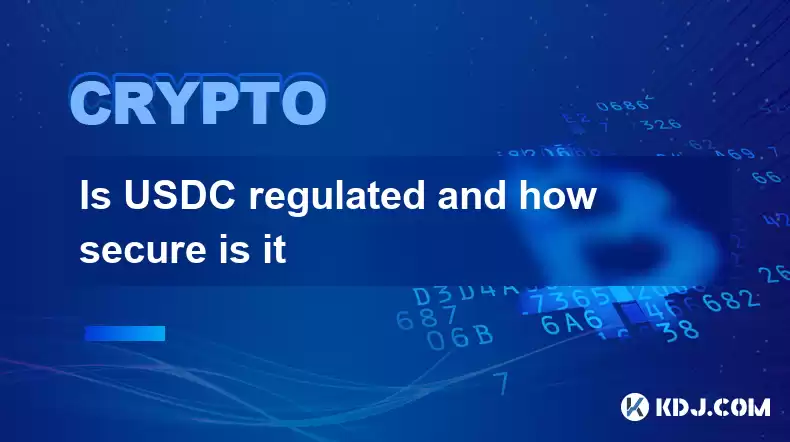
Key Points:
- USDC's regulatory landscape is complex, involving both federal and state oversight. It's primarily regulated as a money transmitter.
- Security measures for USDC involve robust auditing, reserve backing, and the Circle company's internal security protocols. However, risks remain inherent in the cryptocurrency space.
- The security of USDC is tied to the solvency and security practices of Circle, its issuer. External factors, such as legal challenges or market volatility, can impact its security.
- Understanding the regulatory framework and inherent risks is crucial before investing in or using USDC.
Is USDC Regulated and How Secure Is It?
USDC, a prominent stablecoin pegged to the US dollar, operates within a complex regulatory environment. While not directly regulated as a bank, it faces scrutiny from various financial authorities. The primary regulatory framework comes from its classification as a money transmitter in many jurisdictions. This means it’s subject to anti-money laundering (AML) and know-your-customer (KYC) regulations, requiring thorough identity verification of users and reporting of suspicious activities.
The regulatory landscape varies across different states and countries. Some jurisdictions have specific regulations for stablecoins, while others are still developing their frameworks. This inconsistency presents both challenges and opportunities for USDC's future regulatory status. The lack of a unified global regulatory approach for stablecoins introduces uncertainty. This uncertainty can impact investor confidence and the long-term stability of the asset.
The security of USDC hinges on several interconnected factors. The most crucial aspect is the backing of its reserves. Circle, the issuer of USDC, regularly publishes attestations from independent accounting firms, confirming that the USDC in circulation is fully backed by a reserve of equivalent US dollars and short-term US Treasury bonds. These attestations offer transparency into the reserves, providing users with confidence in the asset's stability.
Beyond the reserve backing, Circle employs various security measures to protect USDC. These include robust internal security protocols designed to prevent fraud and unauthorized access to funds. However, like all digital assets, USDC is vulnerable to various cyber threats, such as hacking and malware attacks. The security of the underlying blockchain technology is also critical. Any vulnerabilities in the blockchain network could potentially compromise the integrity of USDC.
The security of USDC is also indirectly linked to the overall health of the cryptocurrency market. Market volatility and negative sentiment towards cryptocurrencies can impact investor confidence and the price of USDC, even if the reserves remain fully backed. External factors such as legal challenges or regulatory changes could also influence the stability and perceived security of USDC.
While Circle strives to maintain the security and stability of USDC, it's essential to acknowledge inherent risks. These risks include the possibility of hacking, operational failures within Circle, or unforeseen legal challenges. The potential for de-pegging from the US dollar, even temporarily, also poses a significant risk to investors. This is why due diligence and risk assessment are crucial before investing in or using USDC.
The transparency provided by regular attestations offers a degree of security, allowing users to independently verify the backing of the reserves. However, relying solely on these attestations isn't sufficient. Investors should also consider the overall reputation and financial stability of Circle and the inherent risks associated with the cryptocurrency market.
The regulatory environment for USDC is dynamic and evolving. As regulatory frameworks develop and mature, the level of oversight and protection for USDC may change. Staying informed about these developments is vital for understanding the risks and opportunities associated with USDC. Future regulations may introduce stricter requirements for reserve backing, transparency, and operational security.
Understanding the intricacies of USDC's regulatory landscape and the associated security measures is crucial for responsible participation in the cryptocurrency market. While USDC aims to provide stability and security, it’s vital to acknowledge the inherent risks involved in any digital asset. Users should always conduct thorough research and assess their risk tolerance before engaging with USDC or any other cryptocurrency.
Frequently Asked Questions:
Q: Is USDC insured by the FDIC?
A: No, USDC is not insured by the Federal Deposit Insurance Corporation (FDIC). The FDIC insures deposits in banks, not cryptocurrency assets like USDC.
Q: What happens if Circle goes bankrupt?
A: The impact of Circle's bankruptcy on USDC would depend on various factors, including the liquidation of its assets and the legal proceedings involved. While Circle aims to maintain full reserve backing, there's no guarantee that all USDC holders would receive a full 1:1 redemption in the event of bankruptcy.
Q: How can I verify the reserves backing USDC?
A: Circle regularly publishes attestations from independent accounting firms, verifying the composition and value of its reserves. These attestations are publicly available on Circle's website.
Q: Is USDC regulated in all countries?
A: No, the regulatory landscape for stablecoins, including USDC, varies significantly across different countries and jurisdictions. Some countries have specific regulations for stablecoins, while others are still developing their regulatory frameworks.
Q: What are the main risks associated with investing in USDC?
A: The main risks include the possibility of hacking, operational failures at Circle, de-pegging from the US dollar, regulatory changes, and the overall volatility of the cryptocurrency market.
Disclaimer:info@kdj.com
The information provided is not trading advice. kdj.com does not assume any responsibility for any investments made based on the information provided in this article. Cryptocurrencies are highly volatile and it is highly recommended that you invest with caution after thorough research!
If you believe that the content used on this website infringes your copyright, please contact us immediately (info@kdj.com) and we will delete it promptly.
- Ethereum Layer-2 Scaling Competition Heats Up as ETH Breaks $4K
- 2025-08-12 10:30:12
- Meme Coins, Investment, and Token Burns: What's Hot in 2025?
- 2025-08-12 10:30:12
- BlockDAG, Chainlink, Hedera: The Cryptos Enterprises are Eyeing
- 2025-08-12 09:30:12
- Dogecoin's Wild Ride: Big Holders, Price Push, and What's Next for the Meme Coin
- 2025-08-12 08:30:12
- Coin Master Board Adventure: Free Energy and the Thrill of the Board
- 2025-08-12 08:50:12
- Bitcoin to $133,000? Here's What the Experts Are Saying
- 2025-08-12 08:30:12
Related knowledge
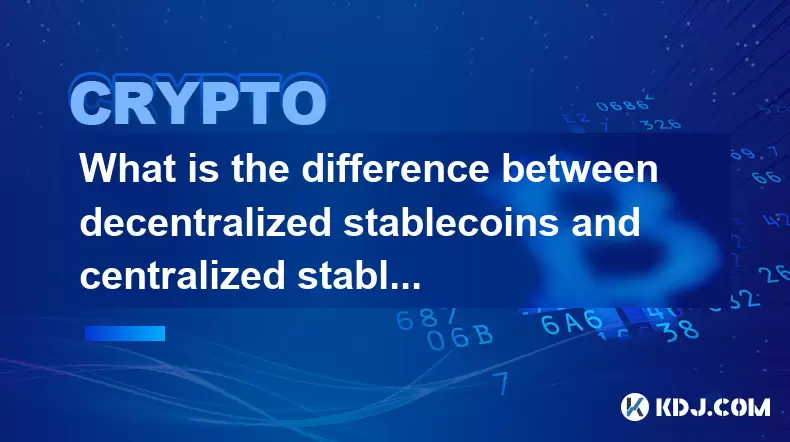
What is the difference between decentralized stablecoins and centralized stablecoins? Pros and cons comparison
Jun 15,2025 at 09:42am
What Are Stablecoins and Why Do They Matter?Stablecoins are a category of cryptocurrencies designed to maintain a stable value, usually pegged to an e...
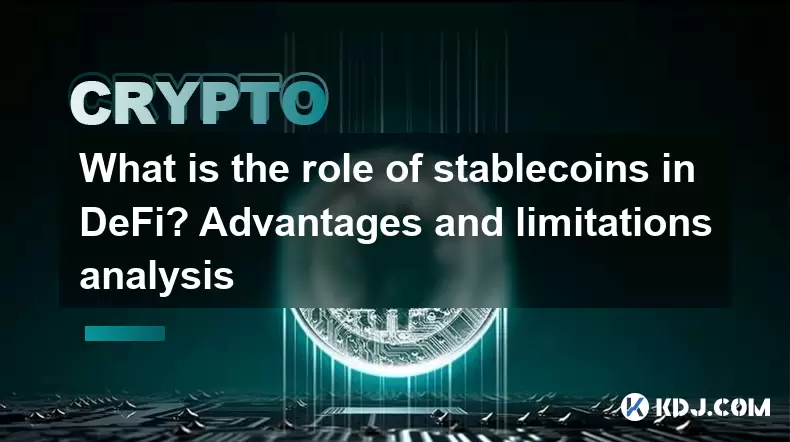
What is the role of stablecoins in DeFi? Advantages and limitations analysis
Jun 14,2025 at 06:28am
Understanding Stablecoins in the DeFi EcosystemStablecoins play a pivotal role in the decentralized finance (DeFi) landscape by providing a bridge bet...
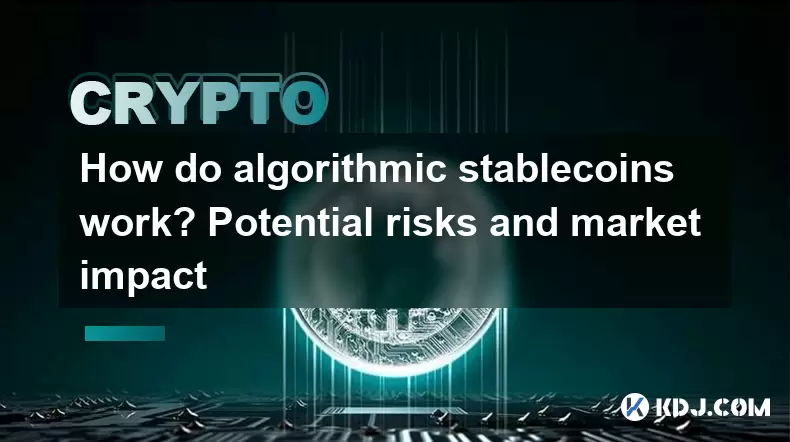
How do algorithmic stablecoins work? Potential risks and market impact
Jun 12,2025 at 02:07pm
Understanding Algorithmic StablecoinsAlgorithmic stablecoins are a type of cryptocurrency designed to maintain a stable value relative to a specific a...
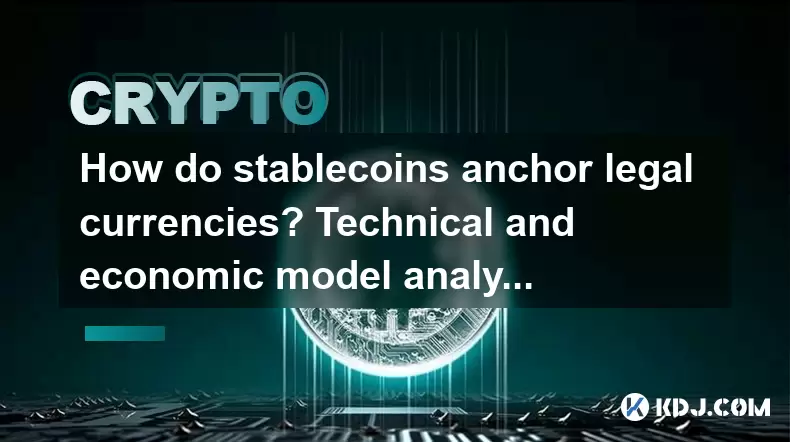
How do stablecoins anchor legal currencies? Technical and economic model analysis
Jun 16,2025 at 08:43am
Understanding the Concept of StablecoinsStablecoins are a category of cryptocurrencies designed to maintain a stable value relative to a specific asse...
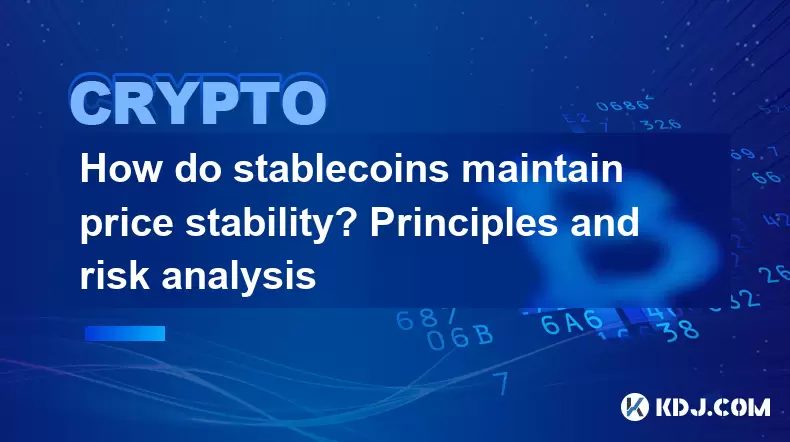
How do stablecoins maintain price stability? Principles and risk analysis
Jun 11,2025 at 12:01am
Understanding the Mechanisms Behind Stablecoin StabilityStablecoins are a category of cryptocurrencies designed to minimize price volatility, often pe...
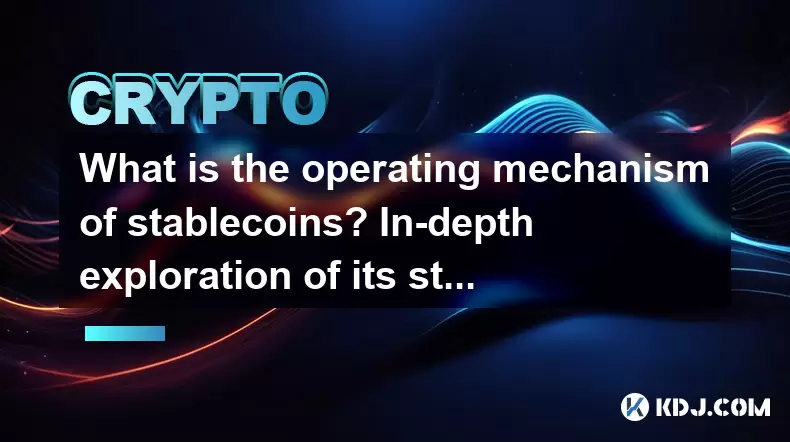
What is the operating mechanism of stablecoins? In-depth exploration of its stability principle
Jun 10,2025 at 09:28pm
Understanding the Core Concept of StablecoinsStablecoins are a unique category within the cryptocurrency market, designed to address one of the most s...

What is the difference between decentralized stablecoins and centralized stablecoins? Pros and cons comparison
Jun 15,2025 at 09:42am
What Are Stablecoins and Why Do They Matter?Stablecoins are a category of cryptocurrencies designed to maintain a stable value, usually pegged to an e...

What is the role of stablecoins in DeFi? Advantages and limitations analysis
Jun 14,2025 at 06:28am
Understanding Stablecoins in the DeFi EcosystemStablecoins play a pivotal role in the decentralized finance (DeFi) landscape by providing a bridge bet...

How do algorithmic stablecoins work? Potential risks and market impact
Jun 12,2025 at 02:07pm
Understanding Algorithmic StablecoinsAlgorithmic stablecoins are a type of cryptocurrency designed to maintain a stable value relative to a specific a...

How do stablecoins anchor legal currencies? Technical and economic model analysis
Jun 16,2025 at 08:43am
Understanding the Concept of StablecoinsStablecoins are a category of cryptocurrencies designed to maintain a stable value relative to a specific asse...

How do stablecoins maintain price stability? Principles and risk analysis
Jun 11,2025 at 12:01am
Understanding the Mechanisms Behind Stablecoin StabilityStablecoins are a category of cryptocurrencies designed to minimize price volatility, often pe...

What is the operating mechanism of stablecoins? In-depth exploration of its stability principle
Jun 10,2025 at 09:28pm
Understanding the Core Concept of StablecoinsStablecoins are a unique category within the cryptocurrency market, designed to address one of the most s...
See all articles

























































































